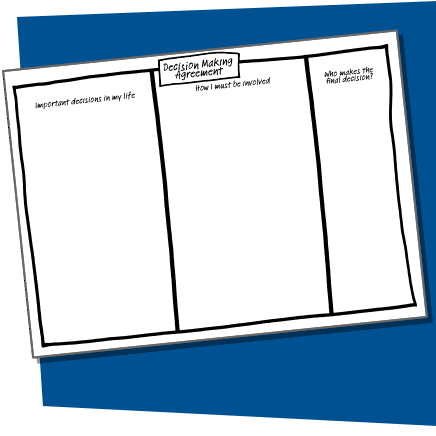Decision Making
We all make decisions every day. From big decisions about what we want to do in life, to small decisions like what we want to wear, what we want to eat, where we want to go and so on. It can be easy to take this control over our lives for granted, but many of the people we support do not enjoy the same degree of self-direction.
This is one of the reasons why many governments have introduced person-centered/directed planning as part of their expectations for quality services. People are recognized as individuals who should receive their own budget and decide how, where and with whom they spend it, in order to have choice and control over what support they get and how they choose to spend their time.


There are two parts to the decision making tool: the decision making profile and the decision making agreement. Together they create a clear picture about:
- How people make decisions
- The range of decisions people make
- What support people may need to make decisions
- Who has the final say
Decision making profile

Describes how a person makes decisions and how they want to be supported in decision-making. Describes how to provide information that makes sense to the person e.g. in audio format, pictures, symbols etc.
Decision making agreement

A clear record of the important decisions that a person is making and how they want to be supported with them. Gives clarity over who makes the final decision.